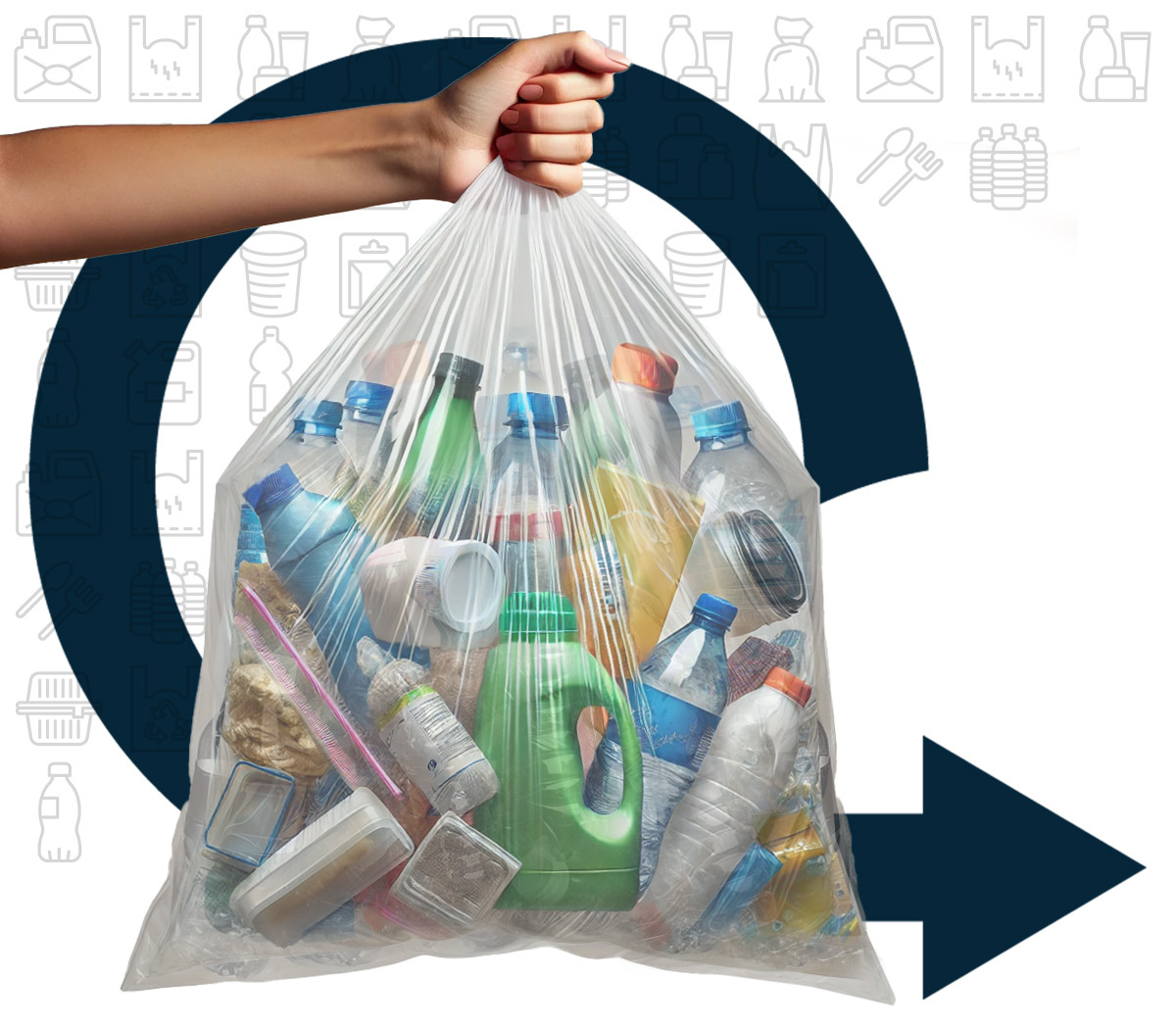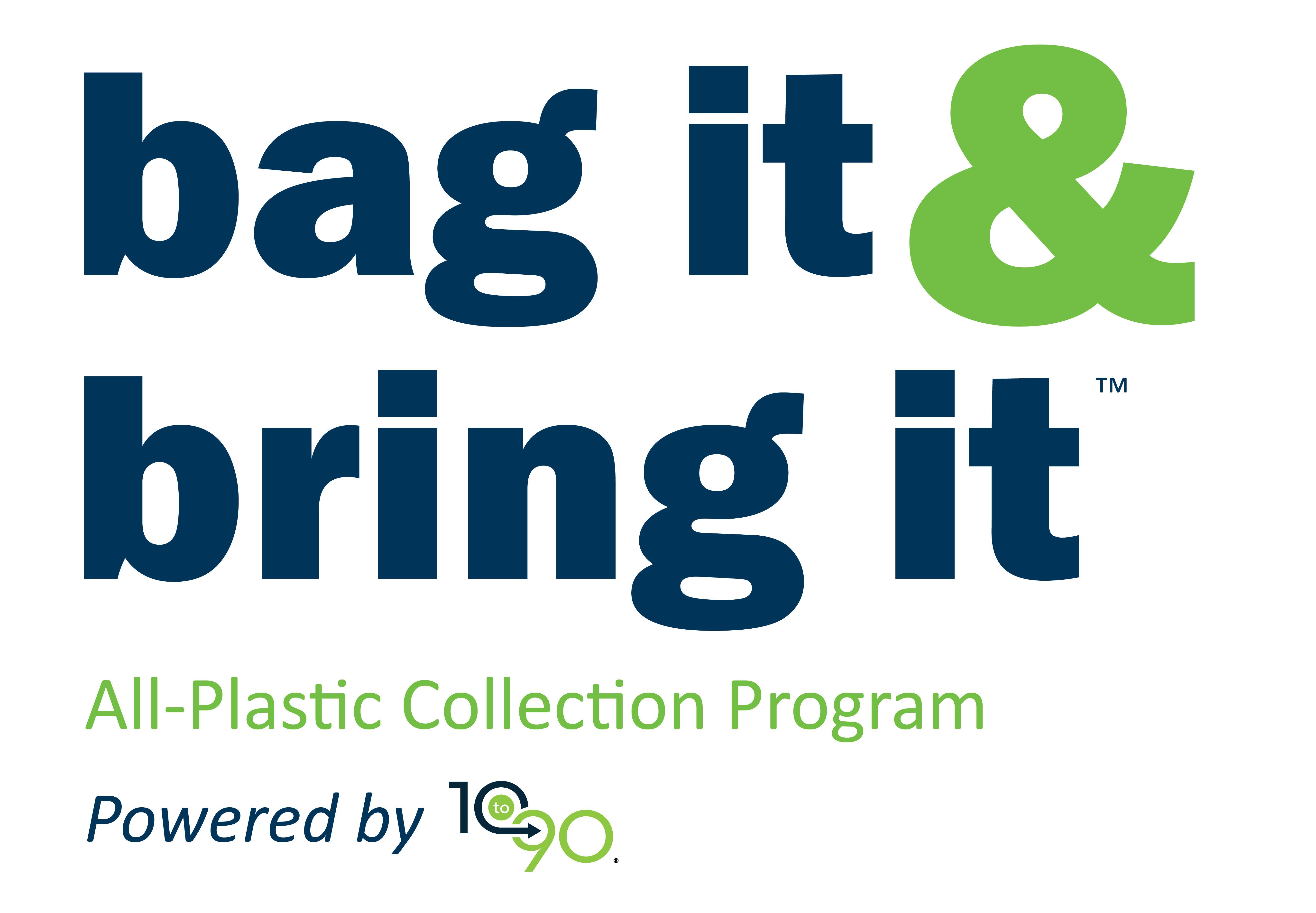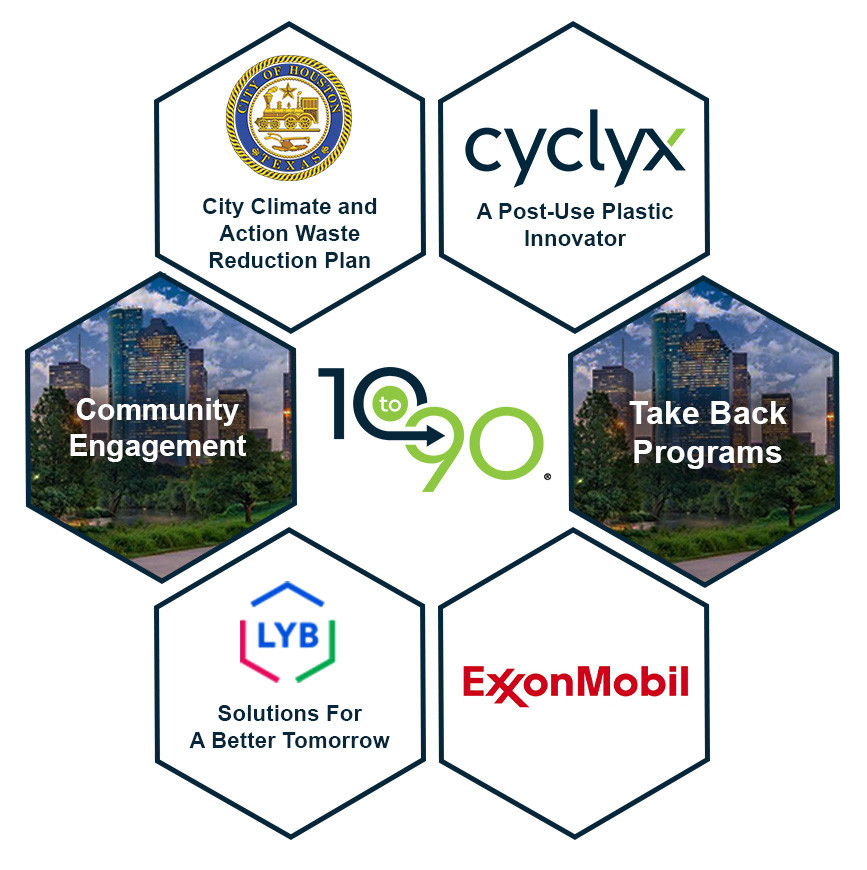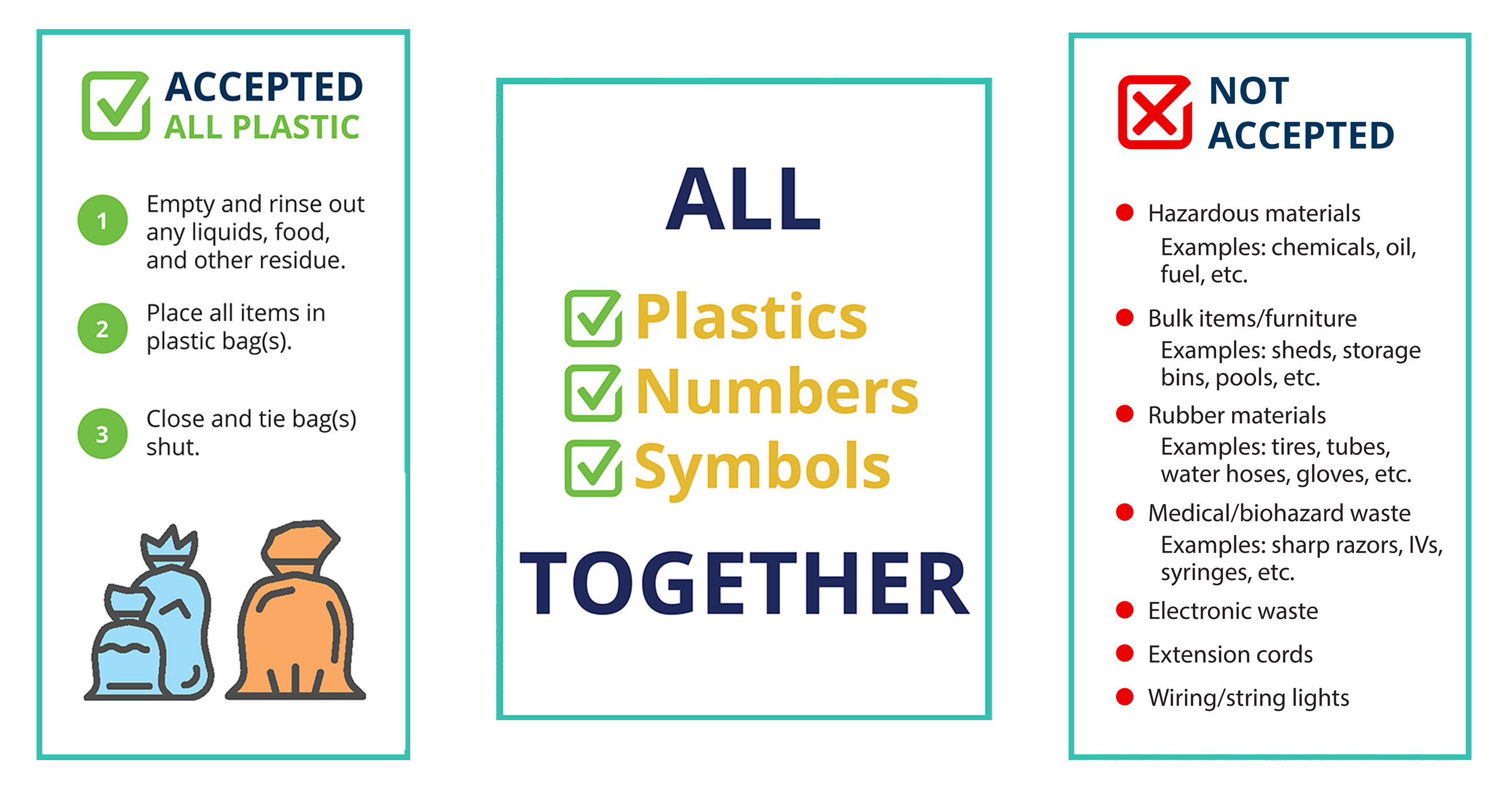Fill the Bags, Not the Landfill
When we say "fill the bags, not the landfill", we're inviting everyone to be part of the solution. The current recycling industry's infrastructure results in less than 10% of plastic waste being recycled*. Our Bag It & Bring It landfill-diversion programs work to collect all types of plastic; divert it from landfills, incineration plants, or the environment; and redirect it onto a recycling pathway.
We establish best practices for handling post-use plastics within communities and municipalities by introducing simple, all-plastic collection solutions. Bag It & Bring It accepts all plastics, all numbers, and all symbols—all together in a bag.
By offering residents easy access to 10to90 Bag It & Bring It Drop-Off Locations, we empower communities and cities to reduce the amount of plastic waste that goes where it doesn't belong. Through this model that eliminates confusion and increases participation, we believe we can find and create new recycling pathways for up to 90% of the material.
Cyclyx, through our 10to90 mission, is working to bridge the gap and move the needle in a positive direction for the recyclability of all plastics. These programs are part of the overall Cyclyx Solution to the plastic waste problem.



